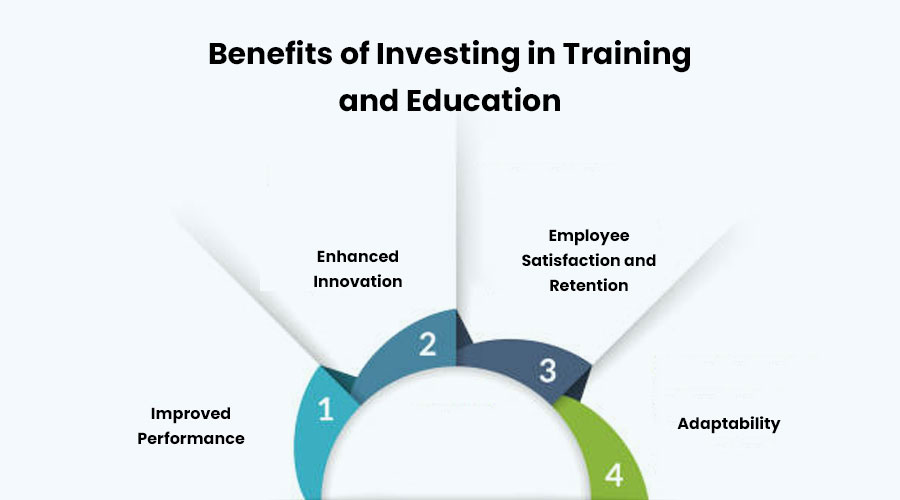Table of Contents
Understanding the Regulatory Landscape
In today’s dynamic business environment, understanding the regulatory landscape is paramount for any organization aiming for sustainable growth and compliance. The regulatory framework encompasses a complex web of laws, rules, and guidelines set forth by governmental bodies to govern various industries and activities. From finance to healthcare, from technology to manufacturing, every sector is subject to its unique set of regulations, making it imperative for businesses to navigate this terrain with precision and foresight.
The Importance of Regulatory Compliance
Regulatory compliance refers to the adherence to laws, regulations, guidelines, and specifications relevant to a particular business activity. While compliance may seem burdensome at times, it serves several crucial purposes:
- Protecting Consumers: Regulations often focus on ensuring product safety, fair pricing, and transparent business practices, safeguarding consumers from harm or exploitation.
- Maintaining Market Stability: Regulations play a pivotal role in preventing fraud, market manipulation, and monopolistic behavior, fostering fair competition and market integrity.
- Preserving Public Trust: Compliance builds trust and credibility among stakeholders, including customers, investors, and regulatory authorities, enhancing the reputation and longevity of a business.
- Mitigating Risks: By adhering to regulatory requirements, organizations can identify and mitigate risks associated with legal violations, financial penalties, reputational damage, and operational disruptions.
Understanding the Regulatory Landscape
Navigating the regulatory landscape involves gaining a comprehensive understanding of the regulatory bodies, laws, and compliance requirements relevant to your industry. Here are key elements to consider:
- Identifying Regulatory Bodies: Begin by identifying the primary regulatory bodies overseeing your industry at local, national, and international levels. These may include government agencies, industry associations, and supra-national organizations like the FDA, SEC, or EU Commission.
- Staying Updated: Regulatory environments are dynamic, with laws and regulations subject to frequent changes and updates. Establish robust mechanisms for monitoring regulatory developments through official publications, industry newsletters, and legal counsel.
- Assessing Applicability: Not all regulations may apply uniformly to every business. Conduct a thorough assessment to determine the specific regulations relevant to your operations based on factors such as location, industry sector, business size, and nature of activities.
- Compliance Framework: Develop a structured compliance framework tailored to your organization’s needs, encompassing policies, procedures, training programs, and internal controls designed to ensure adherence to regulatory requirements.
- Engaging with Regulators: Foster open communication and cooperation with regulatory authorities, seeking guidance and clarification when needed. Proactive engagement can facilitate smoother compliance and potentially influence regulatory outcomes.
- Risk Management: Integrate regulatory compliance into your overall risk management strategy, identifying, assessing, and prioritizing regulatory risks and implementing measures to mitigate them effectively.
- Continuous Improvement: Regulatory compliance is an ongoing process that requires continuous monitoring, evaluation, and improvement. Regularly review and update your compliance efforts in response to changing regulations, organizational developments, and lessons learned from past experiences.
Importance of Compliance in FinTech
In the dynamic world of financial technology, or FinTech, innovation moves at a breathtaking pace. From mobile payment solutions to blockchain technology, FinTech is reshaping the way we manage, invest, and transact money. However, amidst this whirlwind of innovation, one critical aspect often takes center stage: compliance.
Compliance in FinTech refers to adhering to the regulations and guidelines set forth by regulatory bodies governing the financial industry. While the allure of groundbreaking technology may overshadow compliance measures, its importance cannot be overstated. Here’s why compliance is indispensable in the realm of FinTech:
- Regulatory Oversight: Financial services are subject to stringent regulations designed to protect consumers, maintain market stability, and prevent financial crimes such as money laundering and fraud. FinTech companies must navigate through a labyrinth of regulations imposed by various authorities, including but not limited to, the Securities and Exchange Commission (SEC), the Financial Conduct Authority (FCA), and the European Banking Authority (EBA). Compliance ensures that FinTech firms operate within the legal framework, mitigating the risk of regulatory penalties and sanctions.
- Building Trust and Credibility: Compliance fosters trust between FinTech companies, consumers, and investors. By demonstrating a commitment to regulatory compliance, FinTech firms signal their integrity and reliability. In an industry where data security and privacy are paramount, compliance measures reassure customers that their sensitive information is handled with care and in accordance with the law. Moreover, compliance enhances the credibility of FinTech startups, making them more attractive to potential investors and partners.
- Risk Management: Compliance serves as a bulwark against financial and reputational risks. By implementing robust compliance programs, FinTech companies can identify, assess, and mitigate risks effectively. Whether it’s conducting thorough customer due diligence or implementing anti-money laundering (AML) procedures, compliance measures safeguard against illicit activities that could tarnish the company’s reputation and result in financial losses.
- Facilitating Market Access: Compliance opens doors to new markets and opportunities. Many jurisdictions require FinTech firms to obtain licenses or regulatory approvals before offering financial services. By complying with regulatory requirements, companies can expand their reach and tap into lucrative markets with confidence. Moreover, compliance with international standards enhances the interoperability of FinTech solutions, enabling seamless cross-border transactions and global expansion.
- Fostering Innovation Safely: Compliance and innovation are not mutually exclusive; rather, they complement each other. While innovation drives progress and competitiveness in the FinTech landscape, compliance ensures that innovation is channeled responsibly and ethically. By adhering to regulatory guidelines, FinTech companies can innovate with confidence, knowing that their products and services meet the highest standards of integrity, security, and legality.
Regulatory Risks and Penalties
In the contemporary business landscape, navigating regulatory risks and penalties has become an integral part of corporate strategy. The ever-evolving regulatory environment, coupled with increased scrutiny from governing bodies, poses significant challenges for businesses across industries. Understanding these risks and penalties is crucial for organizations to mitigate potential consequences and safeguard their operations and reputation.
The Dynamics of Regulatory Risks:
Regulatory risks refer to the potential for financial loss, legal ramifications, and reputational damage arising from violations of laws, regulations, or industry standards. These risks stem from various sources, including government agencies, industry regulators, and international bodies, and they can affect organizations of all sizes and sectors.
One of the primary challenges businesses face is the sheer complexity and volume of regulations. From data privacy laws like GDPR to industry-specific regulations such as FDA guidelines for pharmaceutical companies, compliance requirements are multifaceted and constantly evolving. Failure to stay abreast of these changes can leave businesses vulnerable to regulatory scrutiny and penalties.
Furthermore, regulatory risks are often intertwined with operational and financial risks. Non-compliance with regulations can disrupt business operations, leading to productivity losses, supply chain disruptions, and damage to customer relationships. Moreover, regulatory fines and penalties can have a substantial financial impact, affecting profitability and shareholder value.
Types of Regulatory Penalties:
Regulatory penalties can take various forms, depending on the nature and severity of the violation. Common types of penalties include fines, sanctions, consent decrees, license revocations, and legal settlements. In some cases, regulatory violations may also result in criminal charges against individuals or organizations responsible for non-compliance.
The magnitude of penalties can vary significantly, ranging from nominal fines for minor infractions to substantial monetary sanctions and even imprisonment for egregious violations. Additionally, regulatory penalties often extend beyond financial consequences, encompassing damage to brand reputation, loss of market share, and diminished investor confidence.
Mitigating Regulatory Risks:
Given the potential impact of regulatory risks and penalties, proactive risk management is essential for businesses to safeguard their interests. Here are some strategies organizations can adopt to mitigate regulatory risks effectively:
- Comprehensive Compliance Programs: Establishing robust compliance programs that encompass regulatory monitoring, risk assessment, policy development, and employee training is fundamental. Regular audits and assessments help identify gaps in compliance and address potential vulnerabilities proactively.
- Stakeholder Engagement: Engaging with regulatory authorities, industry associations, and legal advisors fosters a collaborative approach to compliance. Building constructive relationships with regulators can provide valuable insights into evolving regulatory requirements and mitigate enforcement actions.
- Investment in Technology: Leveraging technology solutions such as regulatory compliance software, data analytics, and automation tools streamlines compliance processes and enhances visibility into regulatory risks. Harnessing advanced technologies enables proactive risk identification and timely response to compliance challenges.
- Culture of Compliance: Cultivating a culture of compliance from the top-down fosters ethical behavior and accountability across the organization. Leadership commitment to compliance initiatives sets the tone for adherence to regulatory standards and promotes a culture of integrity and transparency.
- Continuous Monitoring and Adaptation: Given the dynamic nature of regulatory landscapes, organizations must continuously monitor regulatory changes and adapt their compliance strategies accordingly. Regular risk assessments, scenario planning, and crisis preparedness exercises enable agile responses to emerging regulatory risks.
Impact on Product Development
In the ever-evolving landscape of business, product development stands as a cornerstone of innovation and growth. However, its trajectory is often influenced by a multitude of external factors that can shape its course in unexpected ways. From technological advancements to shifting consumer preferences, understanding the impact on product development is crucial for businesses aiming to stay ahead in today’s competitive market.
Technological Advancements: A Driving Force
One of the most significant factors influencing product development is the rapid pace of technological advancement. From AI and machine learning to blockchain and IoT, emerging technologies continuously reshape industries and consumer expectations. For businesses, this presents both opportunities and challenges.
On one hand, embracing cutting-edge technologies can lead to the creation of innovative products that disrupt markets and capture consumer interest. On the other hand, failure to adapt to technological changes can render existing products obsolete or inferior compared to competitors. As such, staying abreast of technological trends and integrating them into product development processes is paramount for sustained success.
Consumer Preferences: Shaping Product Direction
In today’s customer-centric era, understanding and catering to consumer preferences is essential for product development. With the rise of social media and online reviews, consumers wield more power and influence than ever before. Their feedback and demands can directly impact the direction and features of new products.
By leveraging data analytics and market research, businesses can gain insights into consumer behaviors, preferences, and pain points. This enables them to tailor product offerings to meet specific needs and desires, ultimately enhancing customer satisfaction and loyalty. Moreover, actively soliciting feedback through surveys, focus groups, and beta testing allows companies to iterate and refine products based on real-world input.
Regulatory Environment: Navigating Compliance Challenges
Another critical factor shaping product development is the regulatory environment in which businesses operate. Government regulations, industry standards, and compliance requirements can significantly impact the design, production, and distribution of products across various sectors.
For instance, in industries such as healthcare and finance, stringent regulations govern data privacy, security, and product safety. Failure to comply with these regulations can result in legal consequences, financial penalties, and damage to brand reputation. As such, integrating regulatory compliance into the product development lifecycle is essential for mitigating risks and ensuring long-term viability.
Globalization and Market Dynamics: Expanding Horizons
The increasing interconnectedness of global markets has also influenced product development strategies. Businesses must consider cultural differences, economic conditions, and geopolitical factors when introducing products to international markets.
Adapting products to suit diverse cultural preferences and local regulations requires careful planning and localization efforts. Moreover, fluctuations in currency exchange rates, trade policies, and supply chain disruptions can impact production costs and pricing strategies. By adopting a global mindset and conducting thorough market analysis, businesses can identify opportunities for expansion while mitigating potential risks.
Ensuring Data Security and Privacy
In today’s interconnected digital landscape, data has become one of the most valuable assets for businesses and individuals alike. With the exponential growth in data generation and utilization, ensuring data security and privacy has emerged as a paramount concern. From personal information to sensitive corporate data, the risk of unauthorized access, breaches, and misuse looms large. Therefore, implementing robust measures to safeguard data security and privacy is imperative to maintain trust, integrity, and compliance. Let’s delve into some essential strategies for ensuring data security and privacy in this digital age.
- Comprehensive Risk Assessment: Begin by conducting a thorough assessment of your data landscape. Identify the types of data you collect, store, and process, along with the associated risks. Understanding the potential vulnerabilities and threats will lay the foundation for developing an effective security strategy.
- Data Encryption: Encrypting data is a fundamental step in protecting sensitive information from unauthorized access. Employ strong encryption algorithms to encode data both at rest and in transit. This ensures that even if data is intercepted, it remains unreadable without the encryption key.
- Access Control and Authentication: Implement stringent access controls to limit data access only to authorized users. Utilize multi-factor authentication (MFA) mechanisms to add an extra layer of security, requiring users to provide multiple forms of verification before accessing sensitive data.
- Regular Security Updates and Patches: Stay vigilant against evolving security threats by keeping software, applications, and systems up to date with the latest security patches and updates. Vulnerabilities in software can be exploited by malicious actors to gain unauthorized access to data.
- Employee Training and Awareness: Human error remains one of the leading causes of data breaches. Provide comprehensive training to employees on data security best practices, including how to identify phishing attempts, the importance of strong passwords, and the proper handling of sensitive data.
- Data Minimization and Retention Policies: Adopt a data minimization approach by collecting only the necessary data required for business operations. Establish clear data retention policies to ensure that data is not retained longer than necessary, reducing the risk of unauthorized access and compliance violations.
- Regular Security Audits and Assessments: Conduct regular security audits and assessments to identify potential vulnerabilities, gaps in security controls, and areas for improvement. Engage third-party security experts to perform penetration testing and vulnerability assessments to uncover hidden risks.
- Compliance with Regulatory Standards: Stay abreast of relevant data protection regulations such as GDPR, CCPA, HIPAA, etc., and ensure compliance with their requirements. Failure to comply with regulatory standards can result in severe penalties and damage to reputation.
- Data Backup and Recovery: Implement robust data backup and recovery mechanisms to mitigate the impact of data breaches or disasters. Regularly backup data to secure offsite locations and test the effectiveness of backup procedures to ensure data integrity and availability.
- Continuous Monitoring and Incident Response: Deploy advanced monitoring tools to detect unusual activities and potential security breaches in real-time. Develop a comprehensive incident response plan outlining the steps to be taken in the event of a data breach, including containment, investigation, notification, and recovery.
Compliance as a Competitive Advantage
In an increasingly complex and interconnected global economy, compliance has evolved from being a mere regulatory obligation to a strategic imperative. It’s no longer just about ticking boxes to meet legal requirements; rather, compliance has become a powerful tool that businesses can wield to gain a competitive edge in their respective industries. In this article, we delve into how organizations can leverage compliance as a potent weapon for success.
Understanding Compliance in the Modern Context
Compliance encompasses adherence to laws, regulations, standards, and ethical practices relevant to a particular industry or jurisdiction. While the primary goal of compliance is to mitigate risks and ensure organizational integrity, its scope extends far beyond mere regulatory adherence. Today, compliance extends to various areas such as data protection, environmental sustainability, labor practices, and corporate governance.
The Shift from Cost Center to Value Driver
Traditionally, businesses viewed compliance as a necessary cost center, investing resources solely to avoid penalties and legal repercussions. However, forward-thinking organizations recognize that compliance can be transformed into a value driver. By adopting a proactive approach to compliance management, companies can enhance their reputation, foster trust with stakeholders, and unlock new opportunities for growth.
Building Trust and Reputation
In an era characterized by transparency and accountability, trust and reputation are invaluable assets for businesses. Compliance plays a pivotal role in building and maintaining trust among customers, investors, and partners. By demonstrating a commitment to ethical conduct and regulatory compliance, organizations can differentiate themselves in crowded markets and attract discerning consumers who prioritize integrity.
Mitigating Risks and Enhancing Resilience
Effective compliance practices serve as a bulwark against various risks, including legal liabilities, financial penalties, reputational damage, and operational disruptions. By implementing robust compliance frameworks, businesses can identify and mitigate risks proactively, thereby enhancing their resilience in the face of unforeseen challenges such as regulatory changes, cyber threats, or geopolitical instability.
Seizing Competitive Advantage
Beyond risk mitigation, compliance can be leveraged as a source of competitive advantage. Organizations that embrace compliance as a core value proposition can gain a competitive edge by:
- Differentiation: Compliance can be a powerful differentiator in competitive markets where consumers prioritize ethical business practices and regulatory compliance. By positioning compliance as a key selling point, businesses can stand out from competitors and attract a loyal customer base.
- Market Access: Compliance with industry regulations is often a prerequisite for market entry and expansion. Companies that proactively address regulatory requirements can enter new markets with ease, gaining access to untapped opportunities and expanding their revenue streams.
- Partnership Opportunities: Compliance-minded organizations are attractive partners for collaborations, joint ventures, and strategic alliances. By aligning with like-minded entities, businesses can leverage collective strengths, share resources, and pursue mutually beneficial opportunities for growth.
Collaboration between Engineering and Compliance Teams
In the dynamic landscape of modern industries, where regulations evolve rapidly and technological advancements continuously reshape the playing field, the collaboration between engineering and compliance teams emerges as a cornerstone for success. While traditionally viewed as separate entities with distinct objectives, these two functions are increasingly recognizing the value of working hand in hand to navigate complex challenges and drive innovation.
Understanding the Dynamics:
Engineering teams are tasked with designing, developing, and implementing solutions that meet technical specifications, enhance efficiency, and drive business growth. Their focus lies in pushing the boundaries of innovation, often driven by the pursuit of greater functionality, performance, and cost-effectiveness.
On the other hand, compliance teams are responsible for ensuring that these innovations adhere to regulatory requirements, industry standards, and ethical guidelines. Their role is pivotal in safeguarding the integrity of operations, mitigating risks, and upholding the organization’s reputation and legal standing.
The Nexus of Collaboration:
In today’s interconnected world, the convergence of engineering and compliance is not just desirable but imperative. By fostering collaboration, organizations can unlock synergies that amplify their competitive edge and resilience. Here’s how this collaboration unfolds:
Early Integration: Rather than treating compliance as an afterthought, engineering teams are integrating compliance considerations right from the conceptualization phase. By embedding compliance requirements into the design process, potential pitfalls can be identified and addressed proactively, minimizing the need for costly revisions down the line.
Cross-Functional Dialogue: Effective collaboration hinges on open communication channels between engineering and compliance teams. Regular meetings, joint workshops, and cross-functional training sessions facilitate a shared understanding of objectives, constraints, and emerging regulatory landscapes. This dialogue fosters mutual respect and enables teams to find innovative solutions that balance technical feasibility with regulatory compliance.
Coordinated Testing and Validation: Testing and validation are critical stages where engineering and compliance converge. By aligning testing protocols with regulatory standards, teams can streamline the validation process and expedite product approval. Moreover, leveraging automation and data analytics can enhance the efficiency and accuracy of compliance testing, allowing for faster time-to-market without compromising on quality or regulatory compliance.
Continuous Learning and Adaptation: In the fast-paced realm of technology and regulation, staying ahead requires a commitment to continuous learning and adaptation. Engineering and compliance teams must proactively monitor regulatory developments, industry trends, and best practices. By fostering a culture of learning and knowledge sharing, organizations can anticipate shifts in the regulatory landscape and pivot swiftly to seize new opportunities while mitigating compliance risks.
The Benefits of Collaboration:
The symbiotic relationship between engineering and compliance yields a myriad of benefits that extend beyond regulatory compliance:
- Enhanced Risk Management: By integrating compliance considerations into the design process, organizations can identify and mitigate potential risks early on, minimizing costly setbacks and regulatory penalties.
- Accelerated Innovation: Collaboration fosters a fertile ground for innovation by encouraging cross-pollination of ideas and perspectives. By leveraging compliance requirements as catalysts for innovation, organizations can develop solutions that not only meet regulatory standards but also exceed customer expectations.
- Improved Operational Efficiency: Streamlining collaboration between engineering and compliance streamlines processes, reduces redundancies, and enhances operational efficiency. This not only drives cost savings but also enables organizations to allocate resources more strategically, fueling sustainable growth.
- Enhanced Reputation and Trust: By demonstrating a commitment to compliance and ethical standards, organizations can bolster their reputation and build trust among customers, investors, and regulatory authorities. This enhances brand loyalty and resilience in the face of market volatility and regulatory scrutiny.
Role of Technology in Ensuring Compliance
In today’s rapidly evolving business landscape, compliance has emerged as a cornerstone of organizational success. With regulatory frameworks becoming increasingly stringent across industries, maintaining compliance is no longer just a matter of meeting legal requirements—it’s integral to safeguarding reputation, fostering trust among stakeholders, and driving sustainable growth.
At the heart of this compliance revolution lies technology. From advanced data analytics to sophisticated monitoring tools, technology plays a pivotal role in enabling organizations to navigate the complex web of regulations effectively. Let’s delve deeper into how technology is reshaping the compliance landscape and ensuring adherence to regulatory standards.
Streamlined Data Management: One of the key challenges in compliance management is handling vast amounts of data efficiently. Manual processes are not only time-consuming but also prone to errors, making it difficult for businesses to keep pace with regulatory changes. However, with the advent of technology-driven solutions such as cloud-based platforms and data management systems, organizations can streamline their data collection, storage, and analysis processes. These systems offer real-time insights, allowing businesses to identify potential compliance issues early on and take proactive measures to address them.
Automated Compliance Monitoring: Gone are the days when compliance monitoring relied solely on periodic audits and manual checks. Today, technology-driven solutions enable continuous monitoring of regulatory compliance in real-time. Machine learning algorithms can analyze vast datasets to detect anomalies and flag potential non-compliance issues promptly. By automating routine compliance tasks, organizations can significantly reduce the risk of human error and ensure adherence to regulatory requirements round the clock.
Enhanced Risk Management: Effective compliance goes hand in hand with robust risk management practices. Technology empowers organizations to identify, assess, and mitigate risks more effectively by providing access to advanced risk assessment tools and predictive analytics. By leveraging technology to monitor market trends, regulatory changes, and emerging risks, businesses can adapt their compliance strategies proactively, thereby minimizing the likelihood of compliance breaches and associated penalties.
Improved Reporting and Transparency: Transparency is crucial for building trust with stakeholders, including customers, investors, and regulators. Technology facilitates the generation of comprehensive reports that provide stakeholders with insights into an organization’s compliance efforts and performance metrics. From customizable dashboards to interactive visualization tools, technology enables businesses to communicate complex compliance information in a clear and transparent manner, fostering trust and accountability.
Strengthened Cybersecurity Measures: In an increasingly digital world, cybersecurity has emerged as a critical component of compliance. With the growing threat of cyberattacks and data breaches, regulators are imposing stricter requirements on organizations to safeguard sensitive information. Technology offers a range of cybersecurity solutions, including encryption, multi-factor authentication, and intrusion detection systems, to help businesses fortify their defenses against cyber threats and maintain compliance with data protection regulations.
Training and Education for Engineering Teams
In today’s fast-paced technological landscape, where innovation drives progress, engineering teams stand at the forefront of shaping the future. From software development to mechanical engineering, these teams are tasked with creating solutions that push boundaries and improve lives. However, to maintain their competitive edge and adapt to evolving challenges, continuous training and education are paramount.
The Need for Training and Education:
Engineering is a dynamic field, with new methodologies, tools, and technologies emerging regularly. To keep up with these advancements, engineers must engage in ongoing learning. Training programs offer opportunities for team members to deepen their expertise, learn new skills, and stay abreast of industry trends. Whether it’s mastering a new programming language, understanding the latest manufacturing processes, or adopting agile project management methodologies, training equips engineers with the knowledge and tools they need to excel in their roles.
Benefits of Investing in Training and Education:
- Improved Performance: Well-trained engineers are more effective in their roles, leading to higher-quality work and increased productivity. By investing in training, organizations can optimize their team’s performance and deliver better results.
- Enhanced Innovation: Education fosters creativity and innovation by exposing engineers to new ideas and approaches. Through training, teams can explore alternative solutions, experiment with novel technologies, and drive continuous improvement within their projects.
- Employee Satisfaction and Retention: Offering opportunities for learning and development demonstrates a commitment to employee growth and career advancement. This, in turn, fosters loyalty and engagement among team members, reducing turnover and retaining top talent.
- Adaptability: In today’s rapidly changing landscape, adaptability is key to success. Training ensures that engineering teams remain agile and capable of embracing new challenges, technologies, and methodologies as they arise.
Effective Training Strategies for Engineering Teams:
- Tailored Programs: Recognizing that engineering encompasses diverse disciplines, organizations should tailor training programs to meet the specific needs of their teams. Whether it’s software engineering, mechanical design, or electrical systems, targeted training ensures relevance and maximizes impact.
- Hands-On Learning: Practical, hands-on experience is invaluable for engineers. Incorporating real-world projects, simulations, and workshops into training programs allows team members to apply theoretical knowledge in practical settings, reinforcing learning and skill acquisition.
- Continuous Learning Culture: Training should not be viewed as a one-time event but rather as an ongoing journey. Cultivating a culture of continuous learning encourages engineers to seek out new opportunities for growth, whether through formal courses, self-study, or knowledge-sharing within the team.
- Feedback and Evaluation: Regular feedback and evaluation mechanisms help gauge the effectiveness of training initiatives and identify areas for improvement. Soliciting input from participants allows organizations to refine their programs and ensure they remain aligned with the evolving needs of their engineering teams.
Top FinTech compliance Companies
In the dynamic realm of financial technology (FinTech), compliance with regulatory standards is paramount. As the FinTech landscape continues to evolve, companies are increasingly turning to specialized firms to navigate the complex web of regulations governing their operations. Here, we delve into five top FinTech compliance companies that are spearheading efforts to ensure adherence to regulatory requirements while fostering innovation and growth.
-
-
Next Big Technology:

Focus Area
- Mobile App Development
- App Designing (UI/UX)
- Software Development
- Web Development
- AR & VR Development
- Big Data & BI
- Cloud Computing Services
- DevOps
- E-commerce Development
Industries Focus
- Art, Entertainment & Music
- Business Services
- Consumer Products
- Designing
- Education
- Financial & Payments
- Gaming
- Government
- Healthcare & Medical
- Hospitality
- Information Technology
- Legal & Compliance
- Manufacturing
- Media
-
- Duff & Phelps: Duff & Phelps is a globally recognized leader in providing compliance and regulatory consulting services to FinTech firms. With a team of seasoned experts versed in financial regulations worldwide, Duff & Phelps offers tailored solutions to help companies navigate complex compliance challenges. From regulatory risk assessments to compliance program implementation and ongoing monitoring, Duff & Phelps provides FinTech companies with the expertise and support needed to achieve and maintain regulatory compliance while minimizing operational risks.
- Promontory, an IBM Company: Promontory, acquired by IBM, brings together a wealth of regulatory expertise and technological capabilities to address compliance needs in the FinTech industry. Their suite of solutions includes regulatory intelligence, compliance management systems, and risk assessment tools designed to assist FinTech firms in meeting regulatory obligations efficiently and effectively. With a focus on innovation and collaboration, Promontory empowers FinTech companies to navigate regulatory complexities and achieve sustainable growth.
- Kroll: Kroll, a division of Duff & Phelps, offers a comprehensive range of compliance solutions tailored to the needs of FinTech companies. Drawing on their deep understanding of regulatory requirements and industry best practices, Kroll helps FinTech firms develop robust compliance frameworks, conduct thorough due diligence, and mitigate regulatory risks. Through proactive monitoring and timely insights, Kroll enables FinTech companies to adapt to regulatory changes and maintain compliance while pursuing their strategic objectives.
- ACA Compliance Group: ACA Compliance Group specializes in providing regulatory compliance and risk management solutions to FinTech companies worldwide. Their team of regulatory experts offers a broad array of services, including compliance program assessments, regulatory filings, and compliance training, to help FinTech firms navigate regulatory complexities with confidence. By staying abreast of emerging regulatory trends and industry developments, ACA Compliance Group equips FinTech companies with the knowledge and resources needed to achieve compliance excellence.
FAQs On FinTech compliance
In today’s rapidly evolving financial landscape, FinTech companies have revolutionized the way we manage money, conduct transactions, and access financial services. However, with innovation comes responsibility, especially when it comes to regulatory compliance. Navigating the complex world of FinTech compliance can be daunting, but understanding the fundamentals is crucial for success. In this article, we’ll address some common questions regarding FinTech compliance to shed light on this vital aspect of the industry.
What is FinTech Compliance? FinTech compliance refers to adhering to the regulatory requirements and standards set forth by governing bodies while operating within the financial technology sector. These regulations aim to protect consumers, maintain market integrity, and prevent financial crimes such as money laundering and fraud. Compliance encompasses various areas, including data security, anti-money laundering (AML), know your customer (KYC) procedures, consumer protection, and more.
Why is FinTech Compliance Important? Compliance is essential for FinTech companies to establish trust among consumers, investors, and regulatory authorities. By complying with regulations, FinTech firms can mitigate risks, safeguard sensitive data, and ensure fair and transparent operations. Non-compliance can lead to severe consequences, including hefty fines, legal actions, reputational damage, and even the suspension of operations. Additionally, compliance fosters innovation by creating a level playing field and encouraging responsible business practices within the industry.
How Do FinTech Companies Ensure Compliance? FinTech companies employ various strategies and technologies to ensure compliance with regulatory requirements. These may include implementing robust AML and KYC processes to verify customer identities, conducting thorough risk assessments, monitoring transactions for suspicious activities, and employing encryption and cybersecurity measures to protect sensitive data. Furthermore, many FinTech firms collaborate with regulatory experts, undergo regular audits, and stay abreast of regulatory updates to maintain compliance effectively.
What Are Some Common Regulatory Challenges Faced by FinTech Companies? Navigating the complex regulatory landscape poses several challenges for FinTech firms. One common challenge is the lack of standardized regulations across jurisdictions, making it difficult for companies operating in multiple regions to ensure compliance. Additionally, keeping pace with evolving regulations and technological advancements requires continuous monitoring and adaptation. Moreover, balancing compliance with innovation can be challenging, as stringent regulations may stifle creativity and hinder the development of cutting-edge solutions.
How Can FinTech Startups Overcome Compliance Challenges? FinTech startups can overcome compliance challenges by adopting a proactive approach and integrating compliance into their business strategies from the outset. This involves conducting thorough research to understand regulatory requirements, seeking guidance from legal and compliance experts, and investing in scalable compliance solutions that can adapt to evolving regulations. Additionally, fostering a culture of compliance within the organization and prioritizing transparency and integrity can help startups navigate regulatory hurdles more effectively.
What Role Do Regulatory Sandboxes Play in FinTech Compliance? Regulatory sandboxes are controlled environments where FinTech companies can test innovative products and services under the supervision of regulatory authorities. These sandboxes provide a safe space for experimentation while allowing regulators to assess potential risks and regulatory implications. By participating in regulatory sandboxes, FinTech firms can gain valuable insights, collaborate with regulators, and ensure compliance before launching their products or services to the broader market.
Thanks for reading our post “FinTech compliance: Why it’s a must for engineering teams you’re going to hire”. Please connect with us to learn more about Best FinTech compliance.






















